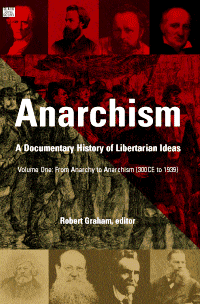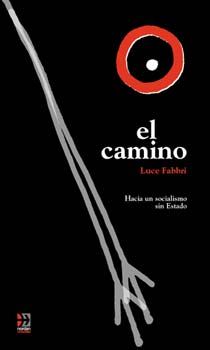Ferrua, Pietro
Il figlio di Bakunin (The Son of Bakunin)
Film by Gianfranco CABIDDU
BAKUNIN, Mihail Aleksandrovič (1814-1876)Communication. FilmsFERRUA, Pietro (Piero) Michele Stefano (1930 - ....)
Italy, 1997
Color, 89’
In Italian and Sardenian.
WRITING CREDITS: Sergio ATZENI, Gianfranco CABIDDU
CINEMATOGRAPHY: Massimo PAU
MUSIC: Franco PIERSANTI
SOUND: Fabio VENTURI
EDITING: Enzo MENICONI
ASS.DIR.: Alberto MANGIANTE
PROD.: Francesco and Giuseppe TORNATORE
PROD. CO.: MEDUSA, SCIARLÒ.
CAST: Fausto SIDDI, Renato CARPENTIERI, Laura del SOL, Massimo BONETTI, Claudio BOTOSSO, Paolo BONACELLI, Carla TRINCAS, Luigi Maria SCALONDRO, Francesco ANTONELLI, Alberto SANNA, Massimo LORIGA, Simona CAVALIERI, Claudia FIO.
DISTR.: MEDUSA DISTRIBUZIONE
This film is even more complex than the novel upon which it is based. The author of the book is Sergio Atzeni, already known to the Italian public for Apologo del giudice bandito published in 1986 by Sellerio. This publisher is Sicilian while the author is Sardinian, two cultures that have very little in common, other than whatever derives from insularity. But there is at least one important connection: Pirandello. I don’t know if any of the literary critics already wrote about it, but my first impression, upon reading Il figlio di Bakunin, is the pirandellian set of situations in some of his plays (e.g. Cosí è, se vi pare), of his novels (Uno, nessuno, centomila) or, for that matter, several of his short stories (Novelle per un anno) in which the plot is so intricate that one can never be sure that what one hears is the truth, a lie, a half truth, or a hypothesis, perhaps distorted by a weak or confused memory. The crux of the matter here is identifying the son of Bakunin . If we put some order in the plot, we can surmise , first of all, that the plot should not be taken literally, because the Russian revolutionist had no son.

Figuratively speaking, the son could be a pupil, an admirer, an imitator or a follower of the noted anarchist, who indeed lived in Italy during the second part of the 19th Century and even visited Sardinia (to meet with Independence hero Giuseppe Garibaldi in Caprera). But the Bakunin the novel deals with is not the real one, who is barely mentioned in the book by a priest, and is presented as a terrible enemy of the Church. The Bakunin of the novel is just a nickname for Antoni Saba, who was a master shoemaker in a small town on the island, was respected by everyone, although feared by some.
Saba’s family lives in comfort, thanks only to Antoni craftsmanship. His shoes are the best available, and the only footwear that miners can use when working in mud: all other shoe brands do not resist humidity and break down very easily.
During the era of Fascism, the director of the mines decides to import shoes from the Continent (Italy’s nickname in the film) because he does not want to sponsor products by an enemy of the state. Saba is forced to lay off his 21 helpers and, in a fit of despair, commits suicide.

Bakunin’s son, Tullio, is still a teenager, elegantly dressed and well pampered until his family’s demise. Seen as a parasite according to public opinion, he behaves, however, very humanly after his father’s death. He begins working as a miner and supports his mother, until she dies from misery.
From the beginning, the novel is constructed as a series of interviews by a photo-reporter who never asks questions, in the story,but whose presence is inferred by the answers given to him. The author had warned, in his introduction, that everything was invented, but if anyone finds something to be true, it should be considered as a forgivable mistake. One of the early narrators specifies: "I have a way to tell that is disordinate and dispersive and I distort all threads."
That illuminates all the contradictions we will notice about the object of the interviews, Tullio Saba, shown alternatively as an anarchist and communist, an idealist and a crook, a brave or a coward, a seducer or a respector of innocence and virginity, a great singer or ham actor, etc. The more we learn about him, the more the plot becomes complicated. At the end of the book (or, of the film) we do not obtain a portrait of Tullio Saba, we only have subjective recollections of him. We can build only theories about his real psychological, human, and political nature.
The filmmaker task was not easy, but as a Sardinian, he could more easily understand the meaning, the rhythm and the construction of the novel. While being faithful to the written text, he added elements here and there. In the novel there are six Sardinian words that would be difficult to understand to Italians of other regions, so they are explained in footnotes. Cabiddu makes a more generous use of Sardinian in some dialogs and in the songs. At times we wonder how a continental Italian viewer can understand of the film director’s intent (and that of the novelist, for, after all, the film, as far as plot is concerned, is very similar to the novel) who may be using a Pirandellian device to hide one or more elements (besides the identity of the interviewer that I choose not to reveal to let the reader-spectator have at least one surprise).
What could that be? I am sure that a Sardinian would be able to recognize the places disguised under a different name, perhaps even some of the family names linked to real events. But are the contradictions in the plot a metaphor for the contradictions in the history of the island? Isn’t Sardinia itself the main subject? Or Sardinian "nationalism" (or "regionalism"), a revolt against Italy that treated the island as a colony (as typified by the new manager of the mines) and a cry for autonomy, or Sardinian culture (linguistically Sardinian is not a mere dialect but one of a dozen Romance languages), etc.
Perhaps the son of Bakunin, becomes the grandson of Bakunin. The confusion between anarchism and communism (a mature anarchist would never have considered the USSR as a workers’ paradise), could it be a symbol for two successive choices of the Sardinian left? An alternation of temptations of the Sardinian proletariat, divided into miners, peasants, shepherds and urban workers?
In the novel a character says:"There is a persistent anarchist tradition in Sardinia, perhaps linked to the lonesome life of shepherds and bandits, or perhaps all craftsmen, thinking minds, are frequently individualists."
Whatever the intentions, Cabiddu is himself a keen craftsman who, while respectful of the literary text, has drenched it with his personality and achieved literary excellence.
Pietro Ferrua
